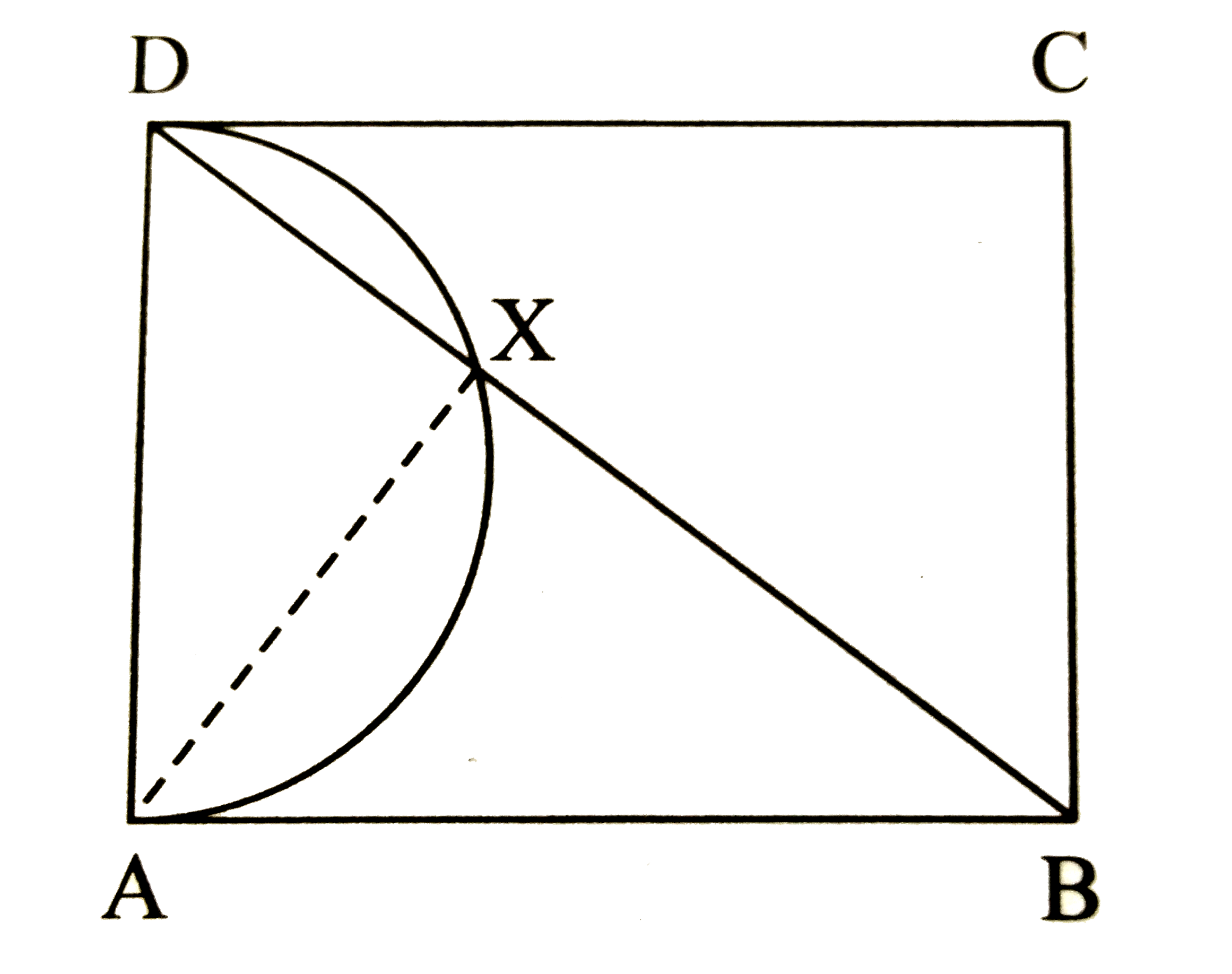If ABCD is an isoceles trapezium. Diagonal BD = 15 cm ,height = 9 cm find it area AB || CD
The correct Answer is:108cm2
To find the area of the isosceles trapezium ABCD with given dimensions, we can follow these steps:
Step 1: Understand the trapezium structure
In an isosceles trapezium, we have two parallel sides (let's denote them as AB and CD) and two equal non-parallel sides (AD and BC). The height (perpendicular distance between the two parallel sides) is given as 9 cm.
Step 2: Identify the diagonal and height
We know that the diagonal BD measures 15 cm and the height from the base CD to the top AB is 9 cm.
Step 3: Use the properties of right triangles
When we drop perpendiculars from points A and B to line CD, we create two right triangles (ABD and BCD). The height of these triangles is 9 cm, and the diagonal BD is 15 cm.
Step 4: Find the length of the base of the right triangle
Using the Pythagorean theorem in triangle ABD:
- Let the base of triangle ABD be x.
- According to the Pythagorean theorem:
BD2=AB2+height2
152=x2+92
225=x2+81
x2=225−81
x2=144
x=12 cm
Step 5: Calculate the lengths of the parallel sides
Since the trapezium is isosceles, the total length of the parallel sides AB and CD can be calculated as:
- Let the length of AB be a and the length of CD be b. The distance from the foot of the perpendiculars to the ends of CD will be equal, hence:
a+2x=b
where x=12 cm.
Step 6: Calculate the area of the trapezium
The area A of a trapezium can be calculated using the formula:
A=12×(AB+CD)×height
Substituting the known values:
A=12×(a+b)×9
Since we do not have the lengths of AB and CD directly, we can assume that the trapezium is symmetric and we can express it in terms of a and b.
Step 7: Substitute values
Assuming AB=12 cm and CD=12+2×12=36 cm:
A=12×(12+36)×9
A=12×48×9
A=24×9=216 cm2
Final Area Calculation
Thus, the area of the isosceles trapezium ABCD is 108 cm2.
In an isosceles trapezium, we have two parallel sides (let's denote them as AB and CD) and two equal non-parallel sides (AD and BC). The height (perpendicular distance between the two parallel sides) is given as 9 cm.
We know that the diagonal BD measures 15 cm and the height from the base CD to the top AB is 9 cm.
When we drop perpendiculars from points A and B to line CD, we create two right triangles (ABD and BCD). The height of these triangles is 9 cm, and the diagonal BD is 15 cm.
Using the Pythagorean theorem in triangle ABD:
- Let the base of triangle ABD be x.
- According to the Pythagorean theorem:
BD2=AB2+height2
152=x2+92
225=x2+81
x2=225−81
x2=144
x=12 cm
Since the trapezium is isosceles, the total length of the parallel sides AB and CD can be calculated as:
- Let the length of AB be a and the length of CD be b. The distance from the foot of the perpendiculars to the ends of CD will be equal, hence:
a+2x=b
where x=12 cm.
The area A of a trapezium can be calculated using the formula:
A=12×(AB+CD)×height
Substituting the known values:
A=12×(a+b)×9
Since we do not have the lengths of AB and CD directly, we can assume that the trapezium is symmetric and we can express it in terms of a and b.
Assuming AB=12 cm and CD=12+2×12=36 cm:
A=12×(12+36)×9
A=12×48×9
A=24×9=216 cm2
Thus, the area of the isosceles trapezium ABCD is 108 cm2.
Topper's Solved these Questions
Similar Questions
Knowledge Check
ABCD is a trapezium, such that AB = CD and AD|BC. AD = 5 cm, BC = 9 cm. If area of ABCD is 35 sq.cm, then CD is :
A√29 cmB5 cmC6 cmD√21 cmABCD is a trapezium, such that AB = CD and AD || BC. AD = 5cm, BC = 9cm. If area of ABCD is 35 sq.cm then CD is :
A√29 cmB5cmC6 cmD√21 cm
ABCD is a cyclic trapezium & ABII CD, AB is diameter. BC = 2cm, AB = 8 cm, CD = ?
View SolutionIf area of An Trapezium (is oceles) is 120 cm2 height = 8 cm find its diagonal
View Solution□ABCD is a rectangle. Taking AD as a diameter a semicircle AXD is drawn which intersets diagonal BD at X. If AB = 12 cm , AD == 9 cm , find the values of (i) BD (ii) BX.

View SolutionIf perimeter of an isoceles Δ is 64 cm and height is 8 cm find area .
View SolutionABCD is a cyclic trapezium & AB is diameter. BC = 2cm, AB = 8 cm, CD = ?
View SolutionABCD is a trapezium . AB ||CD and AB:CD=5:4, E and F are mid points of AD and BC, if CD= 20 cm , Find EF
View Solution
